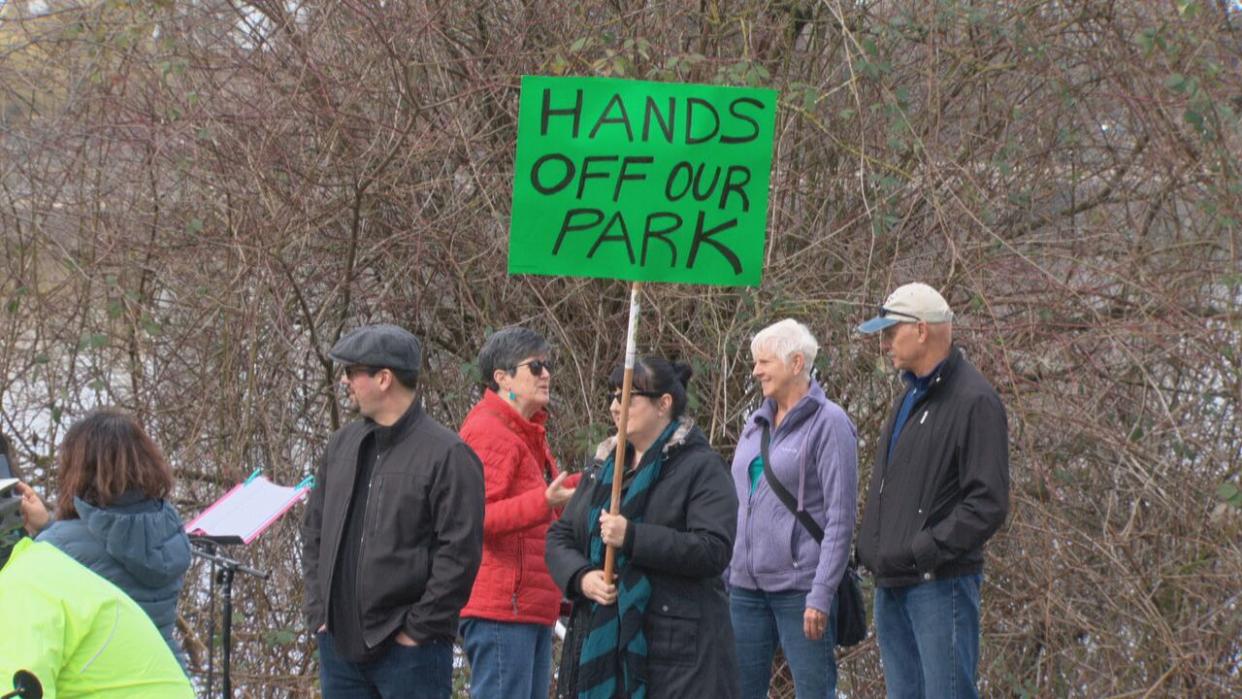Alternative approval process: The common but convoluted way local governments raise millions of dollars

In the Capital Regional District, voters are currently being asked to approve $85 million for affordable housing.
In Nanaimo, they're being asked to approve $49 million for a new public works facility.
In both cases, they're not being done through a referendum, but through a complex funding model that can sometimes be efficient for local and regional governments, and sometimes cause political heartache.
"I think generally people don't understand what the alternative approval process is," said Colin Plant, board chair for the Capital Regional District (CRD).
The CRD is currently using the alternative approval process (AAP) to try and get approval for borrowing up to $85 million for future housing partnerships.
Voters have until Feb. 5 to submit their disapproval of the project. If more than 10 per cent of eligible electors sign a form in opposition, the CRD can't go through with the project without a referendum. If not, the project can go ahead.
"When people talk to me and I explain what an AAP is, some people still will say to me they don't think it's a fair way to gauge public support," said Plant.
"But others will say, 'OK, I understand it's a tool that's available to local governments.'"
Provincial requirement
The AAP might be somewhat convoluted, but it stems from provincial rules over what local and regional governments are allowed to do.
Municipalities can't run deficits, but they are allowed to get loans for specific projects provided they get the direct approval of the public.
The province gives them a choice to either have a referendum or use the AAP — which gives voters 30 days to register their disapproval — not just for loans, but for extending boundaries, eliminating certain utilities, or changing certain parkland designations.
Nanaimo Mayor Leonard Krog argues it's a good system because it provides a middle ground for projects, such as the public works facility, that a government believes is essential for the community.
"This is a need to have instead of a nice to have," said Krog.
"So for me this is a no-brainer. This is exactly the kind of public expenditure for which the [alternative] approval process was designed."
At the same time, he points out the system allows for a referendum if enough voters rise up to oppose a project.
"From my perspective, it is a good way for the public to have a say if there is any real controversy about the expenditure."
Backlash in Burnaby
Last year, Burnaby attempted to use the AAP to convert 8.5 hectares of parkland into an organic waste facility. Council pulled the plug on the AAP last year due to community backlash, and Mayor Mike Hurley said he never wanted to use the process again.
In Nanaimo, the AAP for the public works facility is a redo after city staff failed to meet provincial requirements in how they administered a previous attempt last year. Voters have until Feb. 20 to note their disapproval.
John Treleaven, chair of Grumpy Taxpayer$ of Greater Victoria, which describes itself as a non-partisan citizen's advocacy group, argues that while AAPs are a legitimate tool to raise revenue, governments need to better communicate why they are necessary and ensure transparency in how votes are counted.
In the case of the CRD, he believes it should be put to a referendum, given that board members aren't directly elected to the board.
"Had there been a referendum, there would have been a debate around the issue, right? Using the AAP, there is really no debate," Treleaven said.
"There really is no time in [the 30-day minimum] to have a public debate on the issue that governments want funded … there's just a lack of accountability."
Plant argues the CRD board members unanimously recommended the AAP, and all of them were elected in different municipalities.
While he believes the benefits of expanding the region's affordable housing portfolio are well worth the efforts, he laments how the AAP frames the issue being debated.
"When it comes to affordable housing, people who are actually in support of this have no way to have their opinion noted," he said.
"There is no positive way to say we support the AAP. It is actually only seeking out the negative."


